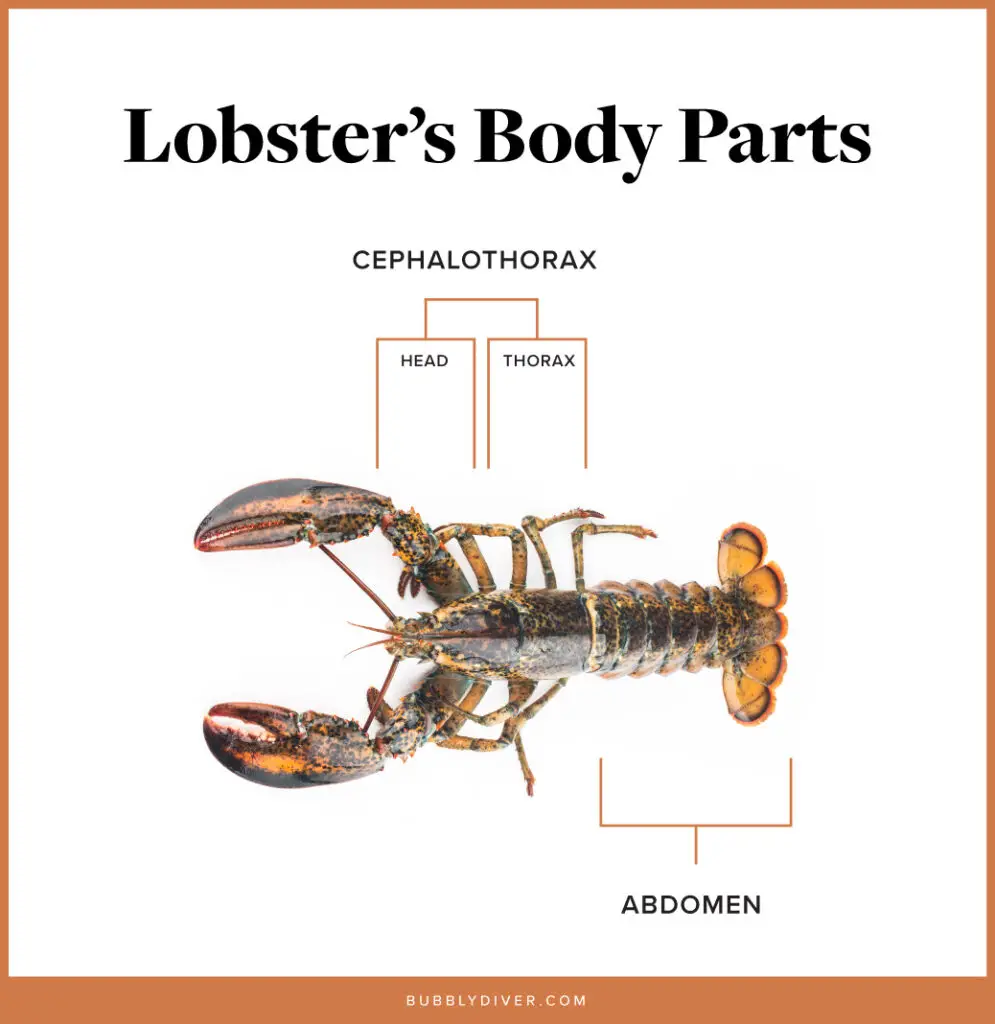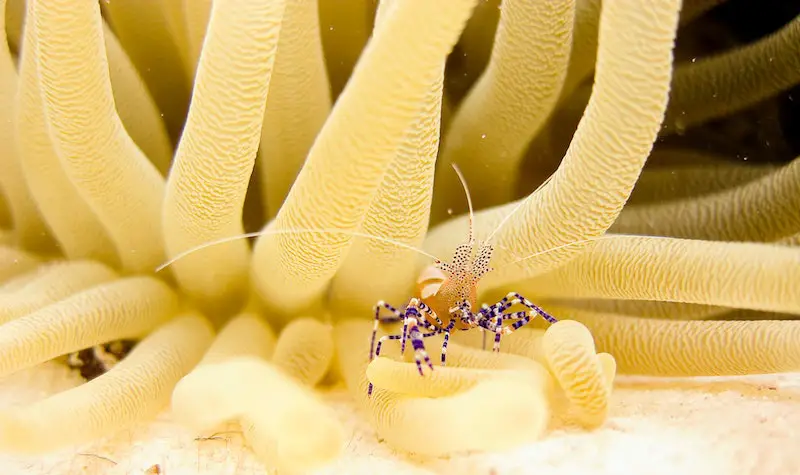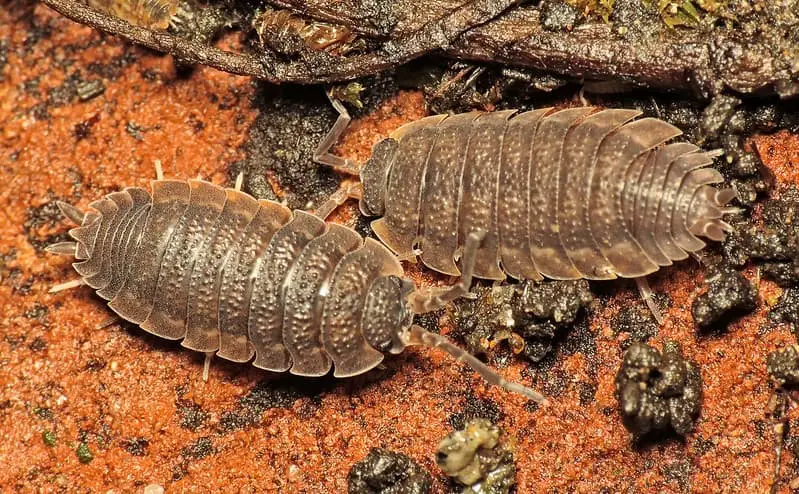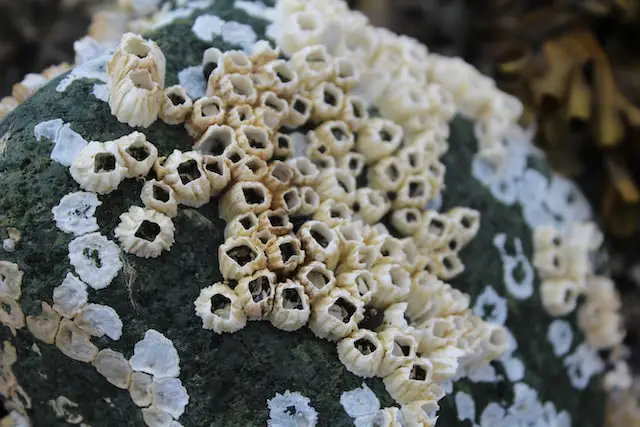Are Lobsters Crustaceans? (Explained)
Crustaceans are an incredibly diverse and abundant group of animals that they’re often referred to as “insects” of the sea. Some of their members are crabs, barnacles, or crayfish but do lobsters belong to the same group? In this blog post, we’ll talk all about it but let’s begin with a quick answer:
Yes, lobsters are crustaceans as they belong to the subphylum Crustacea. The most common characteristics in crustaceans are their body structure, exoskeleton, antennae, appendages, eye structures, gills, reproduction, and their diet.
However, this certainly doesn’t tell the whole story. Below I’ll explain more about why lobsters are crustaceans and what common features they share. Furthermore, I’ll explain if lobsters are bugs or fish. Read on!
Why are lobsters crustaceans?
Crustaceans are a large and diverse group of animals belonging to the phylum Arthropoda and to the subphylum Crustacea. The phylum’s name translates to “jointed feet” as they display many jointed legs. This is one of the many characteristic features of crustaceans and, at the same time – lobsters. Below I’ll explain more of the crustaceans’ features and how lobsters fit into that group of invertebrates.
Body structure

Crustaceans’ bodies consist of three parts: the head, thorax, and abdomen. Sometimes head and thorax are presented as a fusion, called the cephalothorax. This part contains the antennae, eyes, mouthparts, and legs.
The abdomen is a flexible tail at the end of the body. Crabs normally have theirs wrapped under the body and pressed against the thorax. Lobsters, however, use their abdomen to swim rapidly backward to escape predators.
Exoskeleton
Another very characteristic feature of crustaceans is the exoskeleton (“shells”). These animals are fully covered by this hard and calcified shell, which supports and protects their bodies. Lobsters and other crustaceans don’t have any internal skeletons, which makes their internal systems very delicate.
Interestingly, exoskeletons don’t expand as the animals grow inside them. Therefore, crustaceans have to molt their shells as they grow larger. In order to do it, they usually bring the water inside the outer shell, which swells it and eventually splits on the back. Once it’s broken, they flex their body repeatedly until they’re finally out of the old shell.
The frequency of molting depends on the animal’s life cycle – younger individuals grow faster than older ones. Juvenile lobsters can molt every few days/weeks, and adult species molt once every year or once every two years.
Antennae
One of the things that set crustaceans from other arthropods is two pairs of sensitive antennae. They use their sensory antennae to smell and locate food as well as to sense danger. Antennae are located in front of their heads, and depending on the animals and species, their length can differ.
All lobster species have their antennae, but their appearance and length differ. For instance, spiny, non-clawed lobsters have very long antennae that help them protect themselves from predators. Lobsters with claws, however, have shorter and thinner antennae, but they use their claws as a primary defense mechanism.
Appendages
All crustaceans have many appendages, but the number and function strongly depend on the specific species. Most of them have seven or more pairs, and their primary functions are feeding, walking, swimming, reproduction, or respiration.
In general, lobsters have five pairs of appendages. Their legs (called pereiopods), however, can be slightly modified, depending on the lobster’s species. For instance, clawed lobsters have the first pair of legs modified into large claws and two following legs modified into small claws.
Eyes
Crustaceans have eyes called compound eyes, meaning they consist of hundreds or thousands of tiny light-sensitive parts (called ommatidia). Each of these units serves to focus light on the retina and create a portion of an image. They’re often located on stalks.
Crustaceans can detect fast movements, and their vision is in black and white only. Lobsters have limited image resolution but possess high sensitivity and can detect fast movement and the polarization of light as well.
Gills
Another common feature of crustaceans is the way they breathe. They all primarily use gills for respiration, and by using them, they absorb the oxygen from the water. The exact way how the respiration process looks depends on the species.
Lobsters breathe by first taking the water in through the opening between their legs and then by absorbing the oxygen. Interestingly, they can survive out of water for a certain amount of time if their lungs stay moist. They must stay moist, though, because they can’t absorb it directly from the air.
Reproduction
Crustaceans reproduce sexually, which involves the fusion of a sperm with an egg. Females usually carry the eggs under their abdomen until they hatch. Next, they go through a series of metamorphoses. We can divide the life cycle of lobsters into four stages: eggs, larvae, juvenile, and adult stages.
Lobsters’ mating process is especially interesting where female and male lobsters, after a “foreplay”, move to the male’s burrow, and the female sheds her shell in order to store the sperm. After the male deposits sperm, the female stores it for up to 15 months before she releases eggs to fertilize them.
Read more about lobsters’ reproduction and life cycle in my other blog post: “The Complete Life Cycle Of Lobsters (+ Reproduction)”.
Diet and function in the ecosystem
Crustaceans are hunters and prey on small animals, but they’re also known as scavengers. This means they feed on dead matter, removing dead carcasses from the environment. They cycle nutrients and are considered a clean-up crew of the oceans, just like insects’ role on land.
Lobsters are also scavengers but not only. We used to think they feed only on dead animals, but now we know they primarily hunt fresh food, such as fish, clams, crabs, mussels, sea urchins, and sometimes even other lobsters.
Overall, lobsters and other crustaceans are incredibly interesting creatures, and they play a crucial role in the marine ecosystem. They cycle nutrients from decaying matter and provide them later to even some of the largest animals on the planet.
They’re a very diverse and ecologically vital group of organisms, adapted in numerous ways to survive in every corner of our seas.
Are lobsters bugs?
Maybe you’ve heard before a term that lobsters are bugs of the sea. Despite the fact that they’re cleaning crew of the ocean, just like insects on land, maybe you’ve noticed similarities in their appearance. If you look closely at their features, like antennae or walking legs, they might remind you of one of the least liked bugs – a cockroach.
Regardless of similarities, lobsters aren’t actual bugs (or insects). They are, however, closely related as they share common ancestors and belong to the same phylum Arthropoda. This is why they share some similar features, such as an exoskeleton, jointed appendages, segmented bodies, or many specialized appendages.
Lobsters and bugs also have a lot of differences as they belong to different subphylums. Lobsters belong to the subphylum Crustacea and insects to the subphylum Hexapoda (and a class Insecta). Their main differences are the number of appendages or the way they breathe. Insects are land animals, but lobsters can’t survive out of water for a long period of time.
Are lobsters fish?
Lobsters aren’t fish, and they’re not closely related like insects are. Fish belong to the phylum Chordata, and their body features and behavior significantly differ from lobsters. One of the main differences is that fish are vertebrates, meaning they possess a backbone, and lobsters are invertebrates, just like all crustaceans.
Another major difference between these two animals is their body segmentation. The body of fish consists of the head, trunk, tail, and fins and is well adapted to swimming forward. Lobsters’ bodies are adapted to living on the bottom of the ocean, walking and swimming backward by flexing their tails.
Other differences are the way they eat, hunt, or the water salinity adaptation, as lobsters can’t live in freshwater, and some fish species can. They do, however, share some common features, such as possessing the gills or the ability to regenerate lost limbs.
What other animals belong to crustaceans?
Crustaceans form a large and diverse group of animals. The group consists of about 45000 invertebrate species living in every corner of our oceans and seas! The most known species (except lobsters) are crabs, shrimps, and woodlice.




Other examples of crustaceans are barnacles, krill, crayfish, prawns, fish lice, and copepods. Most of them are exclusively aquatic animals, but some live on land. An example of crustaceans living on land is woodlice or sandhoppers.
Surprisingly, they breathe through their gills which are attached to the swimming legs on their abdomen. Therefore, they need to stay moist all the time in order to breathe, and they can survive for about an hour out of water.
Interestingly, there are crustaceans that don’t have gills – barnacles. Barnacles are sessile animals, which means they can’t move. After the time they spent as larvae, they settle and attach themselves to a hard substrate and never move again. They don’t have gills like other crustaceans. Instead, they absorb oxygen through their legs.
You may also like:

Welcome to Bubbly Diver!
I’m glad to see you here. This blog is created for all marine creature lovers by a bubbly diver - me, Dori :)


